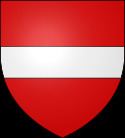 | ||
The Counts of Louvain (French) or of Leuven (Dutch) were the rulers of the County of Louvain. Near the end of the tenth century, the County of Louvain emerged when granted to Lambert I of the House of Reginar by the German Emperor. Originally limited by the rivers Demer, Dijle and Velp, that is more or less the region known today as Hageland, the County of Louvain rapidly increased in size and power. After his marriage with Gerberga, the daughter of the Duke of Lower Lorraine, Lambert I incorporated the County of Brussels; in 1013, Lambert I annexed the Duchy of Bruningrode, located around Tongeren.
Contents
- Counts of Louvain and Brussels
- Counts of Louvain and Brussels Landgraves of Brabant
- Counts of Louvain and Brussels Landgraves of Brabant Dukes of Lower Lorraine
- References
They acquired great influence in the Holy Roman Empire and acquired more titles over time. In 1183, they were created Dukes of Brabant. The county of Louvain was absorbed into the duchy of Brabant.
Counts of Louvain and Brussels
Counts of Louvain and Brussels, Landgraves of Brabant
Counts of Louvain and Brussels, Landgraves of Brabant, Dukes of Lower-Lorraine
From 1183 onwards the titles of Count of Louvain, Count of Brussels and Landgrave of Brabant were merged in the title of Duke of Brabant and used as appanages.
